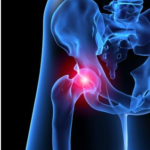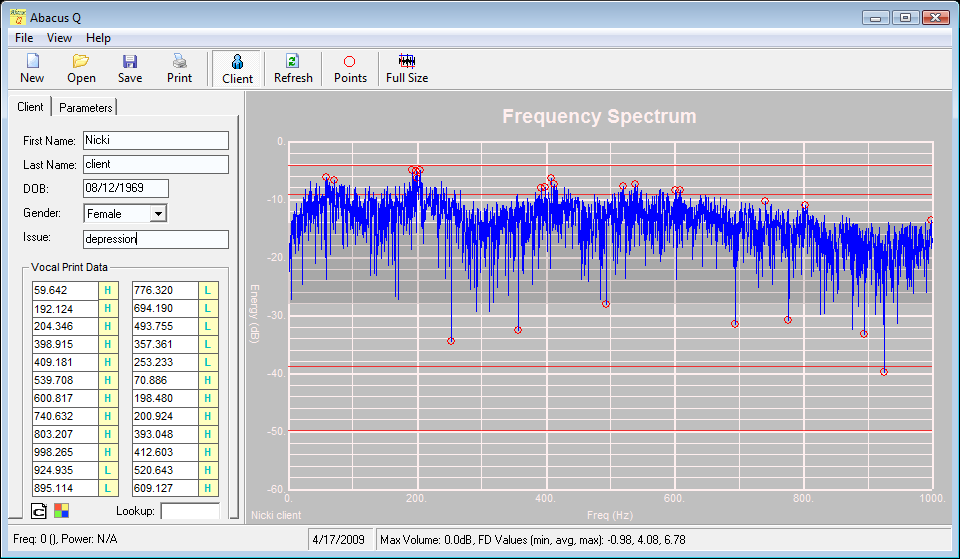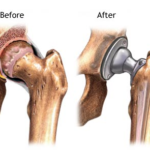Sharry Edwards, M.Ed, Sound Health Institute of BioAcoustic Biology, Albany, Ohio USA
Recent statistics from the U.S. Center for Disease Control and Prevention 1, report that nearly 70 million Americans suffer from chronic joint pain, stiffness and inflammation.
Hip joint pain can run the gamut of being an intermittent annoyance to causing relentless debilitating symptoms. Suggestions for relief can range from simple stretching movements and OTC pain relievers to replacement of the entire hip joint and connective tissue with accompanying narcotics and corticosteroids. Surgery is often a last resort but still does not guarantee freedom from pain.
Causes of hip pain can be single or multiple in origin including tendonitis, arthritis, bursitis (inflammation of joint fluid sacs), fibromyalgia, prolonged abnormal posture, Osteonecrosis (restriction of the blood flow to the area), herniated discs, sciatica, trauma (due to repetitive or stressful movement, injury or excess weight), bacterial infection and genetics. Inflammation commonly accompanies these symptoms but the cause of joint inflammation is not completely understood.
Stiffness, swelling, tenderness, fluid collection, lack of balance, instability, decreased mobility, and deterioration of bone and connective tissue often accompany joint pain. Often surgery and/or attempted rehabilitation is not wholly satisfying.

Joint pain is referred to as arthralgia and is responsible for thousands of lost hours of work, immense suffering, reduced quality of life and lost physical performance. Any respite from the pain, fatigue, immobility and stiffness would be of benefit for sufferers and a great support for physiotherapy; sports injury recovery; trauma and stroke rehabilitation.
A small study conducted by an innovative functional medicine 2 research facility, Sound Health, located in southern Ohio was undertaken to investigate the potential of pain relief and accompanying inflammation using vocal profiling and low frequency sound presentation. This option, if demonstrated to be viable, would offer non-invasive, easy-to-use, low-cost sound presentation as an option for pain reduction. Such a system would certainly be a welcomed resolution to victims of chronic hip joint pain. However, it is not likely that such an efficacious alternative would be well-received by those whose financial status would be negatively impacted as a result of pain reduction without the use of prescribed pain medications and/or surgery.
It is generally recognized that joint pain stems from inflammation and that inflammation comes from either pathogenic or inflammatory mediators of the body. Although these are important issues when dealing with pain, this study primarily investigates the potential to identify and eliminate joint pain using low frequency sound presentation.
Background
Voice Spectral analysis has been under investigation by many prestigious organizations including Pfizer Pharmaceuticals and CogState of Australia. Articles concerning the ability of the voice to identify frequency based biomarkers have appeared in PubMed and many professional publications 3.
These companies use voice analysis for diagnostic purposes primarily but Sound Health’s Institute of BioAcoustic Biology originated most of the work with vocal profiling for health and wellness; and has continued to use the frequencies and patterns of human vocalizations to model the innate mathematical templates of the human body.
Using the idea that the voice is a holographic representation of health status, these non-invasive techniques are being advanced to the extent that a computerized Vocal Profile, using a system of Frequency Equivalents™ (FE) can be used to accurately quantify, organize, interpret, define and extrapolate biometric information via the human voice. This information, in turn, provides the opportunity to predict, direct and maintain intrinsic form and function.
Human BioAcoustic Vocal Profiling & Sound Presentation, at present, is an emerging research modality that has the potential to provide pre-diagnostic assessment using a predictable math-based template of frequency correlations and protocols.
The practice of Human BioAcoustic Vocal Profiling requires two distinct processes if maximum results are to be achieved. First, it is essential to determine the distinct vocal patterns for each person, prior to any low frequency sound being provided. Second but just as important, are the sound formula protocols that must be specifically constructed and presented to each individual. Both elements must be comprehensively performed to ensure that each person is being provided the most accurate and comprehensive approach possible.
Vocal Profiling offers interpretative information that stands independently as a valuable assessment tool. Sound Presentation provides the management phase through brainwave entrainment 4 using low-frequency, ambient sound. The emerging Mathematical Matrix Model of BioAcoustic Biology has the potential to establish the ground work to assert that we are energy based biological units that can be defined and monitored through math-based biomarkers.
Brian Butterworth, in his publication, What Counts: How Every Brain is Hardwired for Math establishes a compelling argument for the brain’s response to math.
Continuous networks of biological signals, “biofrequencies”, provide information to the body to produce and/or reproduce inherent form and function. Tapping into these self-healing biological pathways (mathways) from brain to neuron to cell has long been a goal of scientific medical investigation as an approach to provide and promote optimal health. Brian Butterworth, in his publication, What Counts: How Every Brain is Hardwired for Math establishes a compelling argument for the brain’s response to math.5
The Process
Vocal Profiling uses a microphone linked to a computer that is equipped with a calibrated sound card to capture a short (less than a minute) sample of the voice. A Fast Fourier Transform (FFT) converts the recorded vocal sounds into numeric data using the properties of frequency (Hertz/cycles per second) and amplitude (decibel). This information is used to create a digital graph that represents the vocal frequencies and the corresponding architectures using a range of 0-1000 cycles per second. Twenty-four base frequencies, Sonostats, are identified by the computer as significant.

FFT’s are computationally efficient algorithms commonly used to convert analog vocal data to digital numeric data for rapid spectral analysis. Such transformations from time domain to frequency domain use mathematical functions to depict the relative magnitudes and phase relationships of the vocal frequencies.
The frequencies and patterns that are generated are evaluated in terms of coherence, architecture and numeric value. A technician accesses the graph, identifying the dissonant value that will be used to characterize the information.
The resulting 24 Sonostats are entered into a database that can be manipulated to create a variety of reports that represent substances and structures in terms of Frequency Equivalents; a frequency representation of a person, place or thing. Categories include nutrients, immune and aging factors, biochemicals, toxins, genes, pathogens, proteins, receptors, muscles and personality traits.
These reports are intended for research purposes by wellness providers in the hope of providing substantiation and direction for optimal wellbeing.
The software used for BioAcoustic evaluation is not available commercially and is continuously being modified to fit research requirements. Databases are upgraded constantly to include research results related to frequency correlates that can be associated with the biochemical functions and structural organization of the human body; including environmental threats from toxins and pathogen exposure. The information contained within the databases, as well as the processes to interpret and construct frequency associations are novel, distinctive and exclusive to the research functions of Sound Health.
Vocal sample data is used to develop appropriate formulations that are presented to the subject during a testing phase of the process. All frequencies are reduced to appropriate octave levels and presented in the range of 0-64 Hertz – the frequency range required for brainwave entrainment 5. Objective biofeedback such as oxygen saturation, temperature and heart-rate variability is monitored to determine optimal frequency-based combinations for each individual. Final tones chosen for use are “set” on a device that delivers the appropriate formulations via headphones or an amplified subwoofer. Case studies, to date, have shown that homogenous groups have strikingly similar needs in terms of frequency presentation and productive outcomes. This small sample of three subjects supported that premise:
Three subjects, all presenting with active hip joint pain and associated symptoms were selected for this review.
Subject 1
A 61 year-old male physician in general good health (a former jogger) with the exception of hip joint pain that had continued despite a myriad of contemporary and alternative treatments. He was contemplating joint replacement surgery in the immediate future. Subject reported constant right hip joint pain, stiffness with lack of balance and mobility of the joint and accompanying muscles. Walking was somewhat “jerky” with uneven steps. Muscle stiffness lessened with active movement. Pain level on the day of evaluation was estimated to be 5-6 on a scale of 1-10. Date of Evaluation: January 20, 2009. This client session was filmed.
 Subject 2
Subject 2
A 30 year-old male graduate student who had undergone right hip ball- joint replacement surgery two years previously. Elevated cholesterol and depression from the constant pain and the lack of mobility was taking a toll on his energy and stamina. Joint stiffness lessened somewhat with movement; pain was obvious, a limp, which he described as a “hitch”, impaired his walking and balance. Subject was required as part of his schooling to carry heavy equipment. This exacerbated his pain considerably particularly when it was necessary to climb steps. Pain level on the day of evaluation was estimated to be 6-7 on a scale of 1-10. Date of Evaluation: February 17, 2009. Client session was filmed.
Subject 3
A 62 year old female educator who had experienced a stroke two years prior which disclosed/caused high blood pressure and diabetes. Five medications were presently prescribed. A lack of weight management exacerbated the hip and joint pain although her pain and stiffness was intermittent. Muscle stiffness lessened with movement. There was reported hesitation of movement at times, especially after periods of inactivity. Subject could not correlate symptoms with any particular activity or possible allergy causing foods. Night leg cramping was intermittent. Pain level on the day of evaluation was estimated to be a 3-4 on a scale of 1-10. Because pain was intermittent for this subject, a comparison vocal sample was taken when pain was absent. Date of assessments: March 10 and April 13, 2009, respectively. Client sessions were not filmed.
When considering appropriate formulations for each subject, brain dominance[1], the frequency of each Sonostat and the subject’s objective and subjective feedback is considered. Each frequency listing is developed independently and individually designed to identify and support the elimination of each subject’s reported symptoms. Among these three subjects with reported hip joint pain and inflammation, several nearly identical frequencies appeared in all three subject sets of vocal samples. A total of 192 Sonostats from eight vocal samples were evaluated: Of these, 25 Sonostat sets matched the samples of at least two subjects; seven sets matched all three subjects. The most diverse variance from the median was .06 hertz; a difference not discernible by the human ear.
Each set of appropriate tones was set on a proprietary device, a tonebox that emitted analog duplicates of the sounds that were presented to each client during the testing phase of the process. One particular set of whole brained frequencies eliminated the pain within minutes for all three subjects. For the physician, in less than one minute – “results were impressive” he reported. Increased mobility and balance was reported by all three subjects. For Subject 2, the “gimp” was,= reported by the Subject and observed by clinicians to be less pervasive. There was a shift toward more fluidity in his gait. Stiffness was not eliminated but it was significantly diminished. Walking was less hesitant.
[1] Brain dominance plays a major part in determining which frequency sets are appropriate. It is a common mistake of color/light/sound “healers” to provide a red color combined with a sound they identify as “red”. From our studies it seems that Left brained dominant people use sound and light as opposites; right-brained dominant people use sound and light together. For maximum results, for Left brained persons the color red must be matched with sound identified as being the frequencies associated with green.
Subject 1 was doing well, reporting that the pain had subsided until his tonebox ceased working several days later. At that point the pain returned after a day of not using the tonebox. Because the pain seemed to go away so completely and seemingly effortlessly, he had somewhat convinced himself that it was just time for the pain to fade. As a practicing physician he reasoned that the elimination of pain could not be as simple as play a sound and have the pain subside. When the tonebox quit working, he quickly realized the power of low frequency sound presentation for the relief of hip joint pain.
Subject 2 required reassessment because one of the frequencies presented seemed to be causing headaches. A re-check of his vocal frequencies resulted in one of his tones being eliminated. Headaches were no longer an issue with long term use of the sounds.
The continued requirement for the frequencies long term is generally required to allow the structures that were damaged to recover. Meanwhile the probable biochemical root cause of the original deterioration can be addressed. Identifying Sonostats that decrease the most apparent pain allows for the gathering of the most obviously involved frequencies. Because math can be used to compute predictable outcomes, the missing Sonostats can be calculated. A very simple example: If we know that 2+2+? = 10, we can determine the missing component of the equation. Known formats garnered from years of study allow us to consider absent Sonostats which facilitate the construction of exacting sets of biofrequencies which can be used to ascertain the developing process and genetic origins of presenting symptoms.
Chart -1 – lists the seven consistent frequencies exhibited by the three Subjects. The actual frequencies have been redacted for publication. In this chart the musical notes associated with the frequency range of each Sonostat have been listed.
Chart 1 – Common frequency based Biomarkers used to diminish Chronic Hip Pain for three Subjects are shown in red.

To the right of each of the seven sets of notes, various associated Frequency Equivalents™ are listed. One particular set of notes (shown as RED) eliminated the hip joint pain for all three Subjects.
There are a great many frequency associations that relate to inflammation; parts of the sulfur pathway (which is required to create collagen and connective tissue); evidence of free radical involvement (inflammation causing); ankle and hip muscles; plus assorted biochemicals relating to muscle health.
These three cases demonstrating hip joint pain elimination could be the starting point for establishing a standard process for pain relief using vocal profiling and sound presentation. For the Subjects in this study it was not necessary for them to know how the process worked, only that they had their life back without the relentless joint pain. In light of our current deteriorating health care system, a repeatable system capable of equivalent results as has been demonstrated by this small pilot study, should not be viewed as an optional arena of exploration, it should be designated as mandatory.
Discussion
It is important to note that although this paper was not intended to deal with pathogenic or inflammatory root cause for any of the clinical participants, significant indications of the presence of the frequencies associated with mycoplasma arthritic bacteriophage activity were present. C reactive protein and inflammatory prostaglandins and mediators were present but not consistently.
There is, to date, no definitive reason why the presentation of ambient low frequency analog sound to a human body might alleviate hip joint pain and associated symptomatology. We might want to consider the concept of frequency oscillation entrainment through the skin. That along with other known but unrelated information might present a unifying foundation for frequency based intervention.
The autonomic nervous system, through billions of frequency-based neural interactions, is responsible for the monitoring, maintenance and stasis of every minute detail of biological existence. This diagnostic and regenerative process is not limited to sentient beings. Therefore this course of development is not necessarily a feature of intention, advanced cognitive planning or something that is under conscious control. For example, if sexual intercourse occurs within the appropriate time frame, without preventative intrusion, pregnancy will likely result without forethought with regard to reproductive potential. The body inherently knows how to handle this biological feature.
All creatures large and small, brained and brainless reproduce in some way. If reproduction did not happen, that organism would cease to exist in one generation. The actions and reactions of the autonomic nervous system are largely involuntary. So how does the body “know” how to act, how to regenerate, how to repair? What system is involved? Is it pure mechanics? Are we simply organic robots dancing to an encoded tune?
Mankind, in his quest for biological understanding has divided the human nervous system into layered branches beginning with the peripheral nervous system and the central nervous system.
The peripheral nervous system is further divided into the sensory somatic nervous system and the autonomic nervous system. The autonomic nervous system consists of sensory neurons and motor neurons that run between the central nervous system and various organs.
The autonomic nervous system is divided into the parasympathetic and sympathetic nervous systems. These two regulatory agents monitor and regulate the actions and reactions of the body. When we anticipate eating a favorite dessert, the sympathetic system stimulates saliva in anticipation of receiving the fare. The body is so adaptive that it will recognize which variety of enzyme is required by the expected sweet even before we experience the first morsel.
The body responds to unusual stimuli through the sympathetic nervous system. Responses to loud, non-habituated sounds normally produce an excretion of adrenalin to prepare the body for an unfamiliar event. A person can acclimate to sleeping near a loud railway and not be awakened by the noise but not all responses to sound are learned. A baby, even a baby animal, has an instinctual reflex to loud noises. Even if the noise is familiar, hearing it at an unexpected interval can cause a startle response.
As stated earlier, the parasympathetic nervous system is regulated through the vagus nerve that also regulates the motor impulses of the vocal cords. The vagus nerve, through the recurrent laryngeal nerve and spinal cord, has a direct pathway to the brain. Through entrainment of the vocal cords and the vagus nerve, the sounds produced by the vocal cords can be perceived as a holographic representation of the regulating parasympathetic neuronal network.
BioAcoustically Biological Entrainment
The Central Nervous System (CNS) is an interactive intranet that allows constant information from millions of body processes—which keep us functioning as an inclusive unity of atoms, cells, tissues, organs and systems—to collaborate. The majority of these activities unite via the brain through the twelve cranial nerves; in particular the vagus nerve plays a significant role in these processes.
Human BioAcoustic Vocal Profiling & Sound Presentation offers a glimpse into the mathematical modeling and understanding of that CNS process through entrainment of the vagus nerve and the vocal cords. Since the vagus nerve is a direct pathway to the brain, and the vocal cords lie within the structures of the vagus nerve bundle, the voice can be perceived as a direct frequency representation of the sympathetic and parasympathetic expressions of the body.
At present, BioAcoustic sound presentation is designed to allow the skin to accept the sounds being presented. Ongoing studies have shown that changing the timing of the frequency formulation protocols allows organs to be directly targeted for intervention. Using a vocal sample in comparison to the known principles of the body’s Mathematical Matrix allows frequency intervention to support the fundamental conduct of self-healing.
Through Human BioAcoustic techniques the self-healing is often perceived as being so subtle that people sometimes insist that it was just time for the body to get well on its own. An anecdotal video demonstration of the management of gout pain by manipulating the frequencies associated with gout shows the absolute dominion over gout pain using BioAcoustic sound presentation. The video shows an MD who was experiencing gout related pain, redness and swelling as the symptoms were provoked and then rescinded. This was repeated several times in the same session by the presentation and withdrawal of frequencies known to support the body in dealing with the symptoms of this very painful type of arthritis.
Reassessment is essential to insure that the sounds are being used for the appropriate amount of time. An excess of a sound can cause symptoms to recidivate. The presentation of Frequency Equivalents seems to be akin to ingesting a vitamin. It is not the vitamin that achieves the healing; it is what the body does with the vitamin that makes the difference.
The Voice as a Holographic Representation of the Body
The voice, as music, is a calculated mathematical arrangement of sounds. The voice, as spoken language, is a complex, yet often mathematically chaotic, conglomeration of sounds. Each word is made up of individual sound units called phonemes.
Human BioAcoustics examines the chaos, the disharmony, of these phonemes. The foundational principle on which BioAcoustics has been established is the perception that the voice is an in-depth representation of the body. The frequencies, the coherence patterns and the architecture of the voice have been used to develop a computerized Mathematical Matrix that can provide a glimpse into the individual mathematical patterns that make-up the body.
Steven Xue, Ph.D., a noted researcher in the arena of the voice and health, has shown a definitive relationship between the voice, health and aging. Dr. Xue has studied the role of vocal changes and health such as the role of apnea and snoring as it relates to vocal sound waves. In a recent interview with Perspectives Magazine, Xue reiterated the importance of understanding which vocal changes are normal and which may signal health problems.6
Danielle Campbell-Angah, Editor of ADVANCE for Audiologists and Speech Pathologists, states that the quality of nutrients ingested has a significant impact on vocal health. Campbell explains, “On a cellular level the body depends on specific nutrients for the best performance of each individual cell. In this same way certain enzymes, co-enzymes, vitamins and minerals have an effect on the functioning of the vocal mechanism”.7
Voice Analysis (Vocal Profiling) is much more than listening for allophones – a phonetic variation of a word that would differentiate the speech patterns of persons who might have a Texan or French accent. BioAcoustic computerized evaluations examine the biometric principles of the frequencies contained in the voice and then relate those patterns to an emerging Mathematical Matrix that is being assembled using several thousand case studies as a base.
Thousands of mathematical associations, which closely follow the known biochemical relationships of the body, have been identified. For example, when the FE of calcium is combined with the FE of magnesium, the resulting Frequency Equivalent is the bone matrix protein. Medical science has long recognized that calcium and magnesium are needed, in combination, to support bone growth. Lab tests, and double blind, long-term and homogeneous case studies have all provided useful information that has worked to substantiate the voice as a multi-dimensional view of homeostasis conditions.
These observations are obvious, but who, or what, has dominion over these processes? Why has medical science not been able to completely access and explain this internal alchemy? In our limited wisdom, should we have access to knowledge of such potent significance? The answer may not be obvious but it is inevitable. If such a unifying premise were to exist it would contain not only a diagnostic component but also a method of management and resolution for all disease, stress and trauma!
If such an operative prescription for maintenance and renewal could be achieved, it would permit dominion over the innate processes of the body that are mandatory for rejuvenation, nutritional and structural requirements, appropriate detoxification systems and potentially, perpetual regeneration. If, in addition, that system could predict how the body would react based on genomic, environmental and internal stimuli, it would be an incredible advancement in the world of medicine. Human BioAcoustic Vocal Profiling & Sound Presentation is such a twofold system.
Disclaimer: Human BioAcoustic Vocal Profiling and Sound Presentation, as originated by Sharry Edwards, M.Ed., does not diagnose or prescribe for medical or psychological conditions nor does it claim to prevent, treat, mitigate or cure such conditions. HBA researchers do not provide diagnosis, care, treatment or rehabilitation of individuals, nor apply medical, mental health or human development principles.
References
1 http://www.cdc.gov/mmwr/preview/mmwrhtml/mm5717a9.htm
2 The National Institute of Medicine defines integrative medicine as any therapy which has some high quality scientific evidence of safety and efficacy.
- Kumar, R, Clermont, G, Vodovotz, Y, Chow, C. The dynamics of Acute inflammation. Journal of Theoretical Biology. 2004 April (145-155). www.sciencedirect.com
3 Cannizzaro MS, Cohen H, Rappard F, Snyder PJ. Bradyphrenia and bradykinesia both contribute to altered speech in schizophrenia: a quantitative acoustic study. Cogn Behav Neurol. 2005 Dec;18(4):206-10. PMID: 16340393 [PubMed – indexed for MEDLINE]
3 Cannizzaro MS, Reilly N, Mundt JC, Snyder PJ. Remote capture of human voice acoustical data by telephone: a methods study. Clin Linguist Phon. 2005 Dec;19(8):649-58. PMID: 16147408 [PubMed – indexed for MEDLINE]
3 Cannizzaro M, Harel B, Reilly N, Chappell P, Snyder PJ. Voice acoustical measurement of the severity of major depression. Brain Cogn. 2004 Oct;56(1):30-5. PMID: 15380873 [PubMed – indexed for MEDLINE]
3 Harel B, Cannizzaro M, Snyder PJ. Variability in fundamental frequency during speech in prodromal and incipient Parkinson’s disease: a longitudinal case study. Brain Cogn. 2004 Oct;56(1):24-9. PMID: 15380872 [PubMed – indexed for MEDLINE]
3 Reilly N, Cannizzaro MS, Harel BT, Snyder PJ. Feigned depression and feigned sleepiness: a voice acoustical analysis. Brain Cogn. 2004 Jul;55(2):383-6. PMID: 15177818 [PubMed – indexed for MEDLINE]
3 Vogel AP, Maruff P. Comparison of voice acquisition methodologies in speech research. Behav Res Methods. 2008 Nov;40(4):982-7. PMID: 19001389 [PubMed – indexed for MEDLINE]
3 New Test May Detect Parkinson’s Early, Aid Search for Drugs. http://www.michaeljfox.org/newsEvents_mjffInTheNews_article.cfm?ID=73
3 Cobeta, Acoustic voice analysis in patients with Parkinson’s disease treated with dopaminergic
3 Gamboa J, Jiménez-Jiménez FJ, Nieto A, Montojo J, Ortí-Pareja M, Molina JA, García-Albea E, drugs. Department of Otolaryngology, Hospital Universitario Príncipe de Asturias, Alcalá de Henares, Madrid, Spain.
4 http://www.trans4mind.com/holosync/Research.pdf- The Science Behind Holosync and Other Neurotefchnologies: A Revolution in Neuroscience: Tuning the Brain. Bill Harris, Director of Centerpointe Research Institute.
5 Butterworth, Brian. What Counts: How Every Brain is Hardwired for Math. Free Press (Simon & Schuster Inc.). 1999.
Brain dominance plays a major part in determining which frequency sets are appropriate. It is a common mistake of color/light/sound “healers” to provide a red color combined with a sound they identify as “red”. From our studies it seems that Left brained dominant people use sound and light as opposites; right-brained dominant people use sound and light together. For maximum results, for Left brained persons the color red must be matched with sound identified as being the frequencies associated with green.
6 Xue, S., & Deliyski, D. (2001). Effects of Aging on Selected Acoustic Voice Parameters of Elderly Speakers: Preliminary Normative Data. Educational Gerontology, 21, 159-168.
7 Campbell, D. (1999). High Performance. ADVANCE for Speech-Language Pathologists and Audiologists, May 31.

